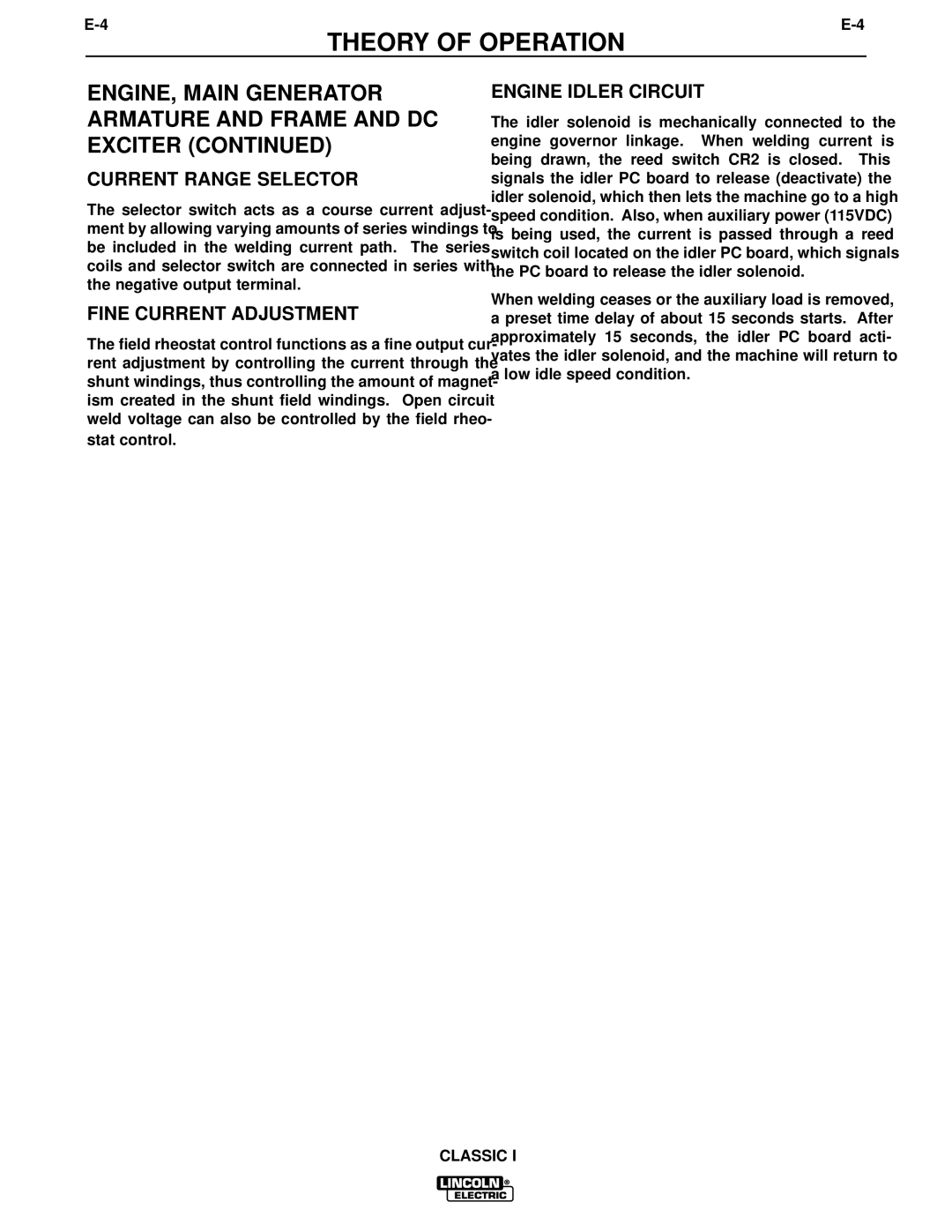
THEORY OF OPERATION
Return to Section TOC
Return to Section TOC
Return to Section TOC
Return to Master TOC
Return to Master TOC
Return to Master TOC
ENGINE, MAIN GENERATOR ARMATURE AND FRAME AND DC EXCITER (CONTINUED)
CURRENT RANGE SELECTOR
The selector switch acts as a course current adjust- ment by allowing varying amounts of series windings to be included in the welding current path. The series coils and selector switch are connected in series with the negative output terminal.
FINE CURRENT ADJUSTMENT
The field rheostat control functions as a fine output cur- rent adjustment by controlling the current through the shunt windings, thus controlling the amount of magnet- ism created in the shunt field windings. Open circuit weld voltage can also be controlled by the field rheo- stat control.
ENGINE IDLER CIRCUIT
The idler solenoid is mechanically connected to the engine governor linkage. When welding current is being drawn, the reed switch CR2 is closed. This signals the idler PC board to release (deactivate) the idler solenoid, which then lets the machine go to a high speed condition. Also, when auxiliary power (115VDC) is being used, the current is passed through a reed switch coil located on the idler PC board, which signals the PC board to release the idler solenoid.
When welding ceases or the auxiliary load is removed, a preset time delay of about 15 seconds starts. After approximately 15 seconds, the idler PC board acti- vates the idler solenoid, and the machine will return to a low idle speed condition.
Return to Section TOC
Return to Master TOC
